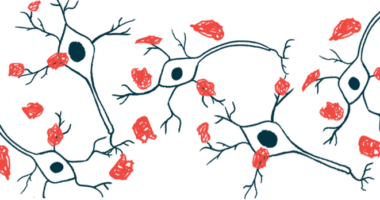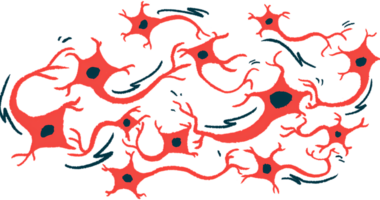NIH supports work into brain-on-a-chip technology to study Parkinson’s
Goal is to better understand disease progression, advance new treatments

A National Institutes of Health (NIH) grant will fund the creation of a brain-on-a-chip technology, a microengineered device containing nerve cells and blood vessels to help scientists more fully understand how neurodegenerative diseases like Parkinson’s and Lewy body dementia affect their ability to function.
Jungwook Paek, PhD, an assistant professor of electrical and computer engineering at Binghamton University in New York, and his collaborator Myungwoon Lee, PhD, an assistant professor of chemistry at Drexel University in Philadelphia, were awarded the $414,191 grant to study how harmful alpha-synuclein protein clumps spread in a way that is specific to disease.
The team will use a multidisciplinary approach that combines biophysical techniques, molecular biology, and human organ-on-a-chip technology to better determine how different cellular environments interact with alpha-synuclein aggregates at a molecular level.
Chip to include neurons and blood vessels, mimicking brain function
“We are interested in how Lewy bodies can propagate over other brain regions and what factors affect their propagation,” Paek said in a university news story. “Blood vessels, neurons and maybe other cell types in the human brain might affect the progression of Parkinson’s.”
The formation of Lewy bodies — toxic aggregates of the alpha-synuclein protein found within nerve cells — is believed to cause Parkinson’s by damaging and killing neurons that produce the chemical messenger dopamine. Their loss disrupts normal brain function, leading to various disease symptoms, from movement-related issues such as tremor, muscle stiffness, and balance difficulties, to nonmotor issues that include cognitive and emotional impairment.
Using electrical engineering principles to study how Lewy bodies form and spread in the brain, the researchers hope to uncover new ways to address Parkinson’s progression and advance disease treatments.
The project involves developing a brain-on-a-chip technology to explore the relationship between alpha-synuclein buildup and brain cells. The device, engineered at a microscopic 3D level, mimics the structure and workings of the human brain “with an unprecedented physiological realism,” the researchers reported in a project outline to the NIH.
“Animal models can help us to understand the complex pathophysiology [disease mechanisms] of the human body, but there are concerns about the interspecies variations between animal and human physiology,” said Paek, who will be assisted by Anika Alim, a PhD student in his university lab.
Aiming to advance treatments for Parkinson’s, other synucleinopathies
By simulating protein and nerve cell interactions in controlled laboratory settings, Paek aims to uncover insights that could lead to more effective therapies for patients with neurodegenerative diseases, and potentially serve as a screening platform for treatments under development.
“The brain-on-a-chip established in this study has the potential to serve as a promising drug screening platform capable of faithfully replicating cellular responses to pharmaceutical agents,” the project outline states.
Paek’s research builds on his background in electrical engineering and previous experience in organic technology, soft robotics (systems inspired by living tissues), and synthetic modeling of human tissues. His curiosity in applying engineering principles to medical research led him to explore the connection between electrical and mechanical disruptions in the body and disease processes.
“Our bodies are highly dynamic both mechanically and electrically, and disruptions in these biophysical cues can affect disease processes across diverse organs,” he said.
“Ultimately,” the lead researchers wrote, this project “will aid in the development of advanced diagnostic and therapeutic approaches” for Parkinson’s and other synucleinopathies, “thereby mitigating the adverse impacts of neurodegenerative disorders on public health and societal functioning.”
Synucleinopathies are neurodegenerative diseases marked by the aggregation of alpha-synuclein in neurons and glia, cells of the nervous system that support neurons.







